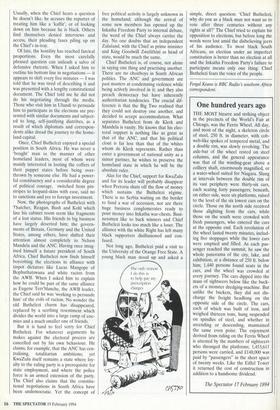One hundred years ago
THE MOST bizarre and striking object in the precincts of the World's Fair at Chicago, was the Ferris Wheel. All day, and most of the night, a skeleton circle of steel, 250 ft. in diameter, with cob- web-like spokes of tempered metal, and a double rim, was slowly revolving. The axle-bar of the wheel rested on steel columns, and the general appearance was that of the winding-gear above a colliery shaft, enormously magnified, or a water-wheel suited for Niagara. Slung at intervals between the double rim of its vast periphery were thirty-six cars, each seating forty passengers; beneath, on either side, were six platforms, raised to the level of the six lowest cars on the circle. Those on the north side received those alighting from the cars, while those on the south were crowded with fresh passengers, who entered the cars at the opposite end. Each revolution of the wheel lasted twenty minutes, includ- ing five stoppages while the lower cars were emptied and filled. As each pas- senger reached the summit, he saw the whole panorama of the city, lake, and exhibition, at a distance of 250 ft. below him; 1,440 persons found seats in the cars, and the wheel was crowded at every journey. The cars dipped into the mass of sightseers below like the buck- ets of a monster dredging-machine. But unlike the buckets, they did not dis- charge the freight headlong on the opposite side of the circle. The cars, each of which was built of iron, and weighed thirteen tons, hung suspended on spindles of steel, and whether in ascending or descending, maintained the same even poise. The enjoyment derived from riding on the Ferris Wheel is attested by the numbers of sightseers who thronged the platforms; 1,453,611 persons were carried, and L140,000 was paid by "passengers" in the short space of twenty weeks. Like the Eiffel Tower it returned the cost of construction in addition to a handsome dividend.
The Spectator 17 February 1894


















































 Previous page
Previous page